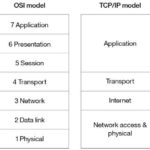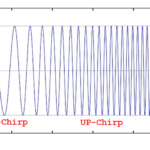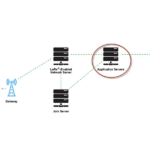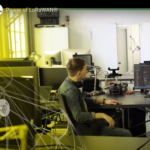What is LoRa?
LoRa (Long Range) is a wireless communication technology that sends information over long distances with low power consumption. It uses a special technique called chirp spread spectrum (CSS) modulation. Chirp Spread Spectrum operates by continuously changing the transmitted signal’s frequency over time. This varying frequency generates a waveform that resembles the sound produced by a bird chirping, allowing it to send signals over long distances without using much power.
LoRa is developed by Semtech Corporation and operates in the license-free ISM (industrial, scientific, and medical) bands, which vary by region as follows:
Europe
868 MHz Band: European Union countries, including Germany, France, Italy, Spain, United Kingdom, etc.
North America
915 MHz Band: United States, Canada, Mexico
Australia
915 MHz Band: Australia
Asia-Pacific
923 MHz Band: Australia, New Zealand, Singapore, Taiwan, Hong Kong, Japan
South America
915 MHz Band: Brazil, Chile, Colombia, Peru
India
865-867 MHz
LoRa technology provides a low data rate and has a high tolerance to interference, making it suitable for low-bandwidth applications that require long-range communication with low power consumption, such as IoT (Internet of Things) devices, smart cities, and agricultural monitoring.
Most common use cases
LoRa is often used for IoT (Internet of Things) devices, small sensors, or other gadgets that collect and send information to a central computer. For example, a farmer might use IoT devices to monitor the moisture levels in their fields and send that information back to their computer.
Because LoRa uses low power and can send signals over long distances, it’s a great choice for IoT devices in remote areas or hard-to-reach locations. It’s also suitable for devices that conserve battery life since they won’t have as much power to send signals.
- Smart Agriculture: LoRa can remotely monitor crops, soil moisture, and other environmental parameters, helping farmers optimize their yields and reduce costs.
- Industrial IoT: LoRa can monitor and control machines, equipment, and other assets in industrial settings, enabling more efficient operations and predictive maintenance.
- Smart Cities: LoRa can be used for smart parking, street lighting, waste management, and other applications that help cities operate more efficiently and sustainably.
- Asset Tracking: LoRa can track the location and status of assets such as vehicles, containers, and equipment, enabling better logistics and supply chain management.
- Environmental Monitoring: LoRa can be used to monitor air quality, water quality, and other environmental parameters, helping to protect public health and the environment.
- Healthcare: LoRa can be used for remote patient monitoring, enabling healthcare providers to monitor patients’ health conditions and provide personalized care.
- Home Automation: LoRa can be used for home automation applications such as smart thermostats, door locks, and security systems, enabling homeowners to control their homes remotely and save energy.
What is LoRa modulation?
Modulation is converting digital data into analog signals that can be transmitted wirelessly. In LoRa modulation, a special technique called chirp spread spectrum (CSS) is used, where the frequency of the transmitted signal changes over time in a specific pattern called a chirp.
This chirping effect allows the signal to have a long duration, which helps it overcome interference and multipath effects. In CSS modulation, data is encoded in the frequency modulation of the chirp signal.
The CSS modulation in LoRa uses a wide bandwidth and a slow chirp rate, which results in long symbols and increased resilience to interference. This modulation scheme enables LoRa devices to achieve a long communication range.
The main reason behind low power
- Adaptive Data Rate: LoRa supports adaptive data rate (ADR), which means that devices can dynamically adjust their data transmission rate based on the quality of the communication link. This allows devices to optimize their power consumption by using higher data rates closer to the gateway and lower data rates farther away.
- Power Management: LoRa devices often incorporate power management techniques to minimize energy consumption during idle or sleep periods. This can include sleep modes, duty cycling, and wake-on-radio features, where devices conserve power when not actively transmitting or receiving data.
It’s worth noting that power consumption can vary depending on factors such as data transmission frequency, duty cycle, and the specific implementation of the LoRa device. Therefore, it’s important to consider these factors when designing and deploying LoRa-based systems.
The main reason behind the long-range
- Firstly, LoRa modulation uses a technique called chirp spread spectrum (CSS), which means that the frequency of the transmitted signal changes over time in a specific pattern called a chirp. This gives the LoRa signal a much longer range than traditional wireless communication methods.
- Secondly, LoRa uses a spreading factor (SF) that spreads the signal across a wider frequency spectrum, which helps to reduce the effects of noise and interference. LoRa can maintain a good signal-to-noise ratio (SNR) even over long distances by spreading the signal across a wider frequency spectrum.
- Finally, LoRa uses lower frequencies than traditional wireless communication methods like Wi-Fi or Bluetooth. Lower frequencies can penetrate obstacles and travel further distances than higher frequencies, making them well-suited for long-range communication.
Yes, the modulation technique used in LoRa technology, called chirp spread spectrum (CSS) modulation, is one of the primary reasons for its long-range capabilities.
In traditional wireless communication, the transmitted signal is typically a continuous wave, subject to interference, noise, and fading as it travels through the air. This can limit the range of the signal, particularly in environments with obstacles or interference.
Similar technology like LORA
Several other technologies are similar to LoRa in terms of their wireless communication capabilities. Here are a few examples:
- Sigfox: Sigfox is a low-power, wide-area network (LPWAN) technology like LoRa. It uses ultra-narrowband modulation to achieve long-range communication over an unlicensed spectrum.
- NB-IoT: NB-IoT (Narrowband IoT) is a cellular network technology designed for low-power IoT devices. It uses narrowband modulation and operates over a licensed spectrum.
- Weightless: Weightless is an LPWAN technology that uses various modulation techniques, including chirp spread spectrum (CSS) and Gaussian frequency-shift keying (GFSK). It operates over an unlicensed spectrum and is designed for IoT applications that require long-range communication.
- LTE-M: LTE-M (Long-Term Evolution for Machines) is a cellular network technology for IoT devices. It uses a licensed spectrum and supports both voice and data communication.
Can we make normal RF long-range using Chirp spread modulation?
Similar techniques can be used to make traditional RF systems long-range, but they would need to be implemented in a way optimized for the specific system and its requirements. Additionally, the design of the antennas, transmitters, and receivers would need to be carefully considered to ensure optimal performance.
Chirp modulation is one of the techniques used in LoRa to enable long-range communication. However, it’s important to note that simply adding chirp modulation to a traditional RF system may not necessarily make it long-range.
The reason LoRa can achieve long-range communication is not only due to its use of chirp modulation but also its use of various other techniques such as spreading factor, error-correcting codes, and lower frequency bands.
These factors will be considered in further articles.
You may also like:
Filed Under: IoT applications, Tutorials








Questions related to this article?
👉Ask and discuss on Electro-Tech-Online.com and EDAboard.com forums.
Tell Us What You Think!!
You must be logged in to post a comment.